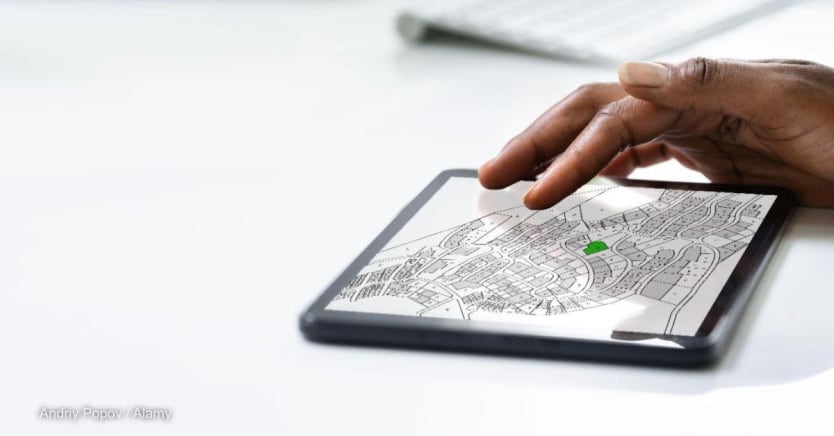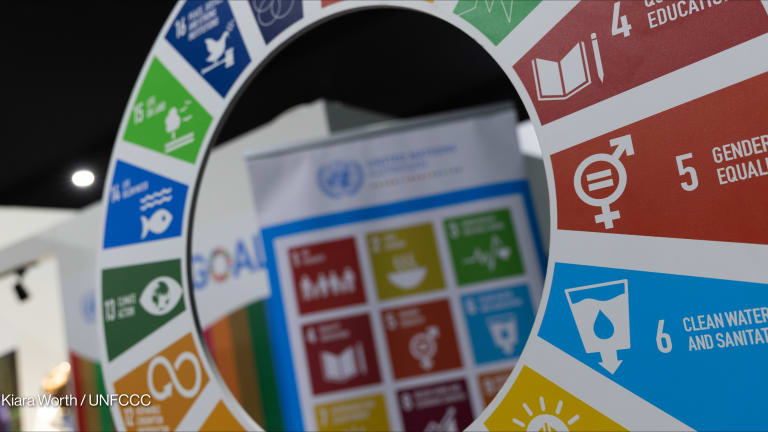
The U.N. Sustainable Development Goals are typically associated with lower-income countries, not wealthy ones such as the United States — let alone a seemingly random state like Minnesota.
But the University of Minnesota is using data sharing, geospatial mapping, and other technologies to see where local counties stand on the SDGs in a wonky but weirdly fascinating exercise that the university hopes to replicate far beyond the chilly state of 5.7 million people.
“We act locally … and local crises are shared globally, but local actors don’t necessarily have the connections to these other local situations,” said Katey Pelican, director of the Strategic Partnerships and Research Collaborative, or SPARC, at the University of Minnesota and co-lead of the UMN SDGs program.
“So the poorest county in Minnesota, Mahnomen County, which is mostly tribal lands, has pretty severe food insecurity issues, challenges associated with climate change,” she explained. “And those kinds of crises associated with climate and food are shared with the poorest districts in Rwanda, are shared with island states like Fiji. And yet there are no connections there, so how can universities potentially play a role?”
One way is collecting reams of disparate data — from entities ranging from the U.S. Census Bureau to state agencies — and putting it all together into one accessible hub that paints a picture of how counties are faring on SDGs such as good health and well-being, and safe water and sanitation.
The goal is to share the analyses so that counties can compare their progress and collaborate. “It might be after-school learning, it might be SNAP [Supplemental Nutrition Assistance Program] food services, it might be agriculture finance. I can guarantee you that those projects don’t know about each other in a lot of the cases,” said Len Kne, director of the U-Spatial program at the university.
“But they should because they’re interrelated, because … they’re working on the same geography with the same people,” he added. “Because there’s so much interaction between the SDGs, and I think a lot of that interaction is geography, right? Things are happening to people living in a place.”
Devex spoke to Kne and Pelican at the recent Esri FedGIS conference in Washington, D.C. Esri, which specializes in mapping and spatial analytics technology, is one of the tools the University of Minnesota uses to measure, visualize, and connect the SDG dots.
“We’re not telling the state government in Minnesota to say, ‘Oh, I’m going to be for the Sustainable Development Goals.’ But they have priorities that are Sustainable Development Goal-related,” Pelican said. “So, for example, the legislature in Minnesota just asked the university to lead a 50-year water plan. They want clean water. Well, that’s an SDG, but they don’t have to say that. We can make that connection.”
Opinion: Do we know what works to meet the SDGs?
Not really — that’s why social entrepreneurs and scientists need to join forces.
The university’s hyperlocal focus has caught the attention of global organizations. It’s now a local implementing partner for the SDG Data Alliance, whose collaborating partners include the United Nations, PVBLIC Foundation, the Environmental Systems Research Institute, the W.K. Kellogg Foundation, and the Chia Network.
Meanwhile, its One Health Systems Mapping and Analysis Resource Toolkit, or OH-SMART, has been used in 18 countries to tackle health challenges ranging from emerging and endemic zoonotic diseases to disaster preparedness and antimicrobial resistance action planning.
These kinds of efforts incorporate complex innovations like GIS, or geographic information systems, which can be mind-boggling to the layperson. “How do you explain GIS to your family, friends, your grandma? Because it’s hard, right?” Kne said.
But the ultimate goal is to bring these technologies down to earth through data. “It’s a simple tool that anyone can access, and I think that has enormous power at the local level,” Pelican said.
As Kne put it: “Mapping is cool.”








